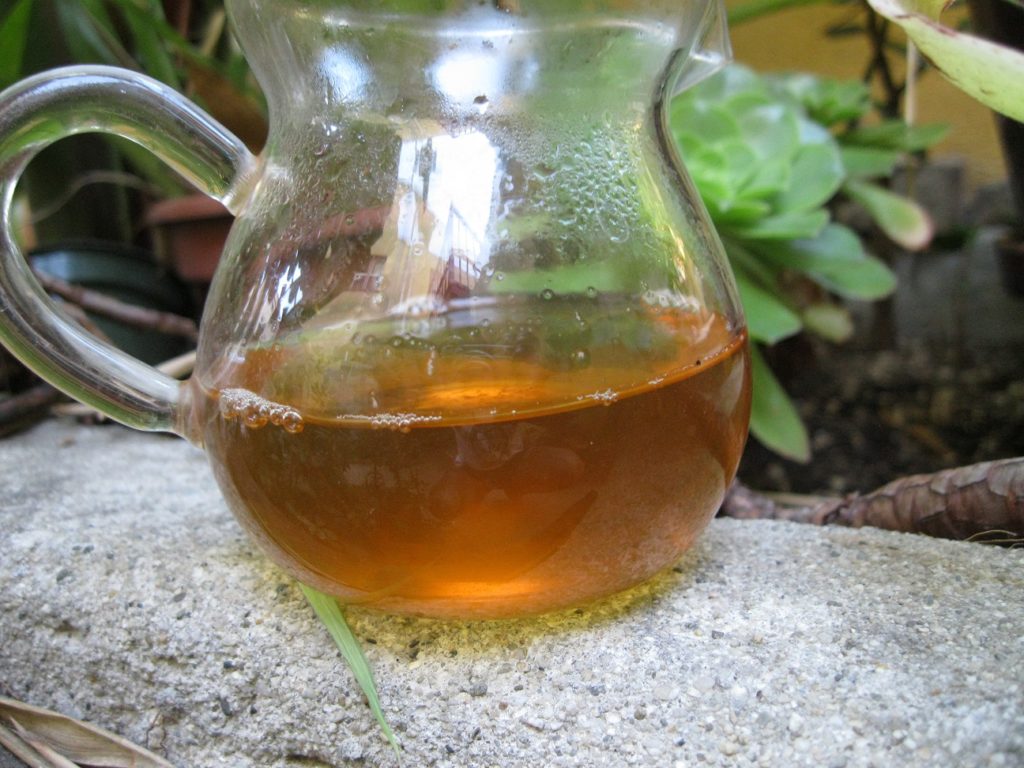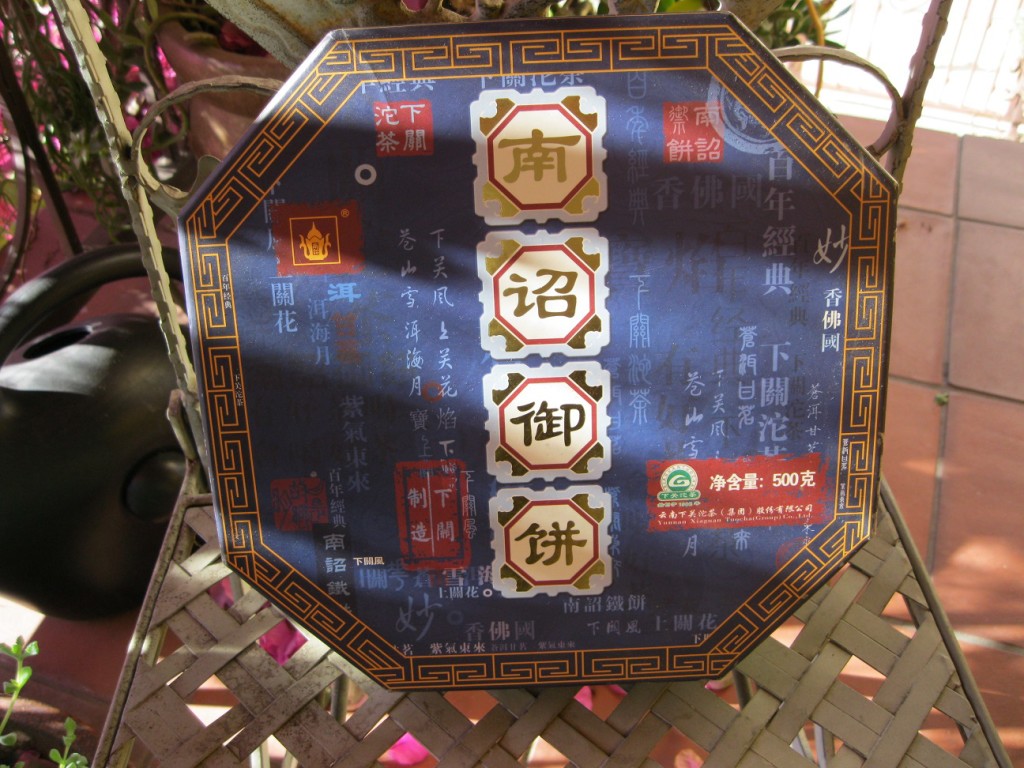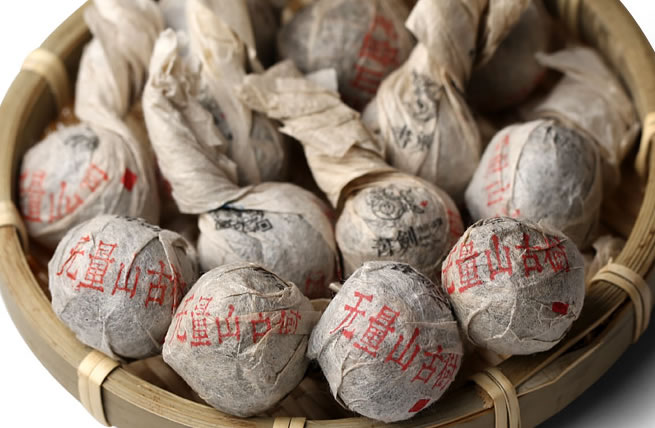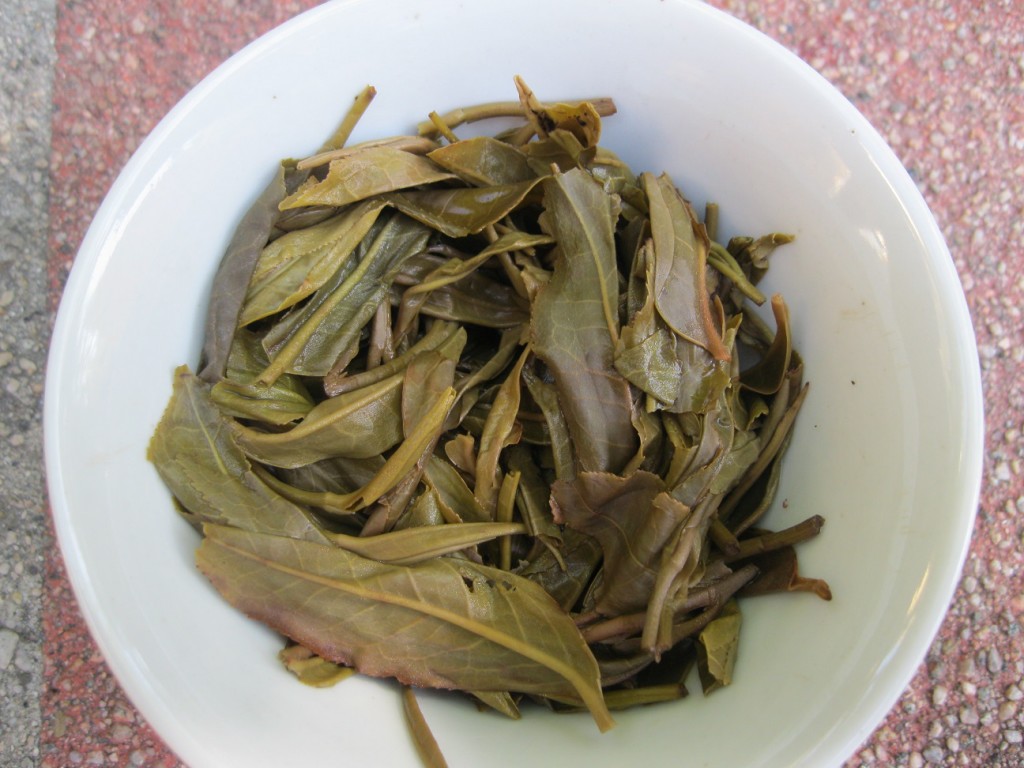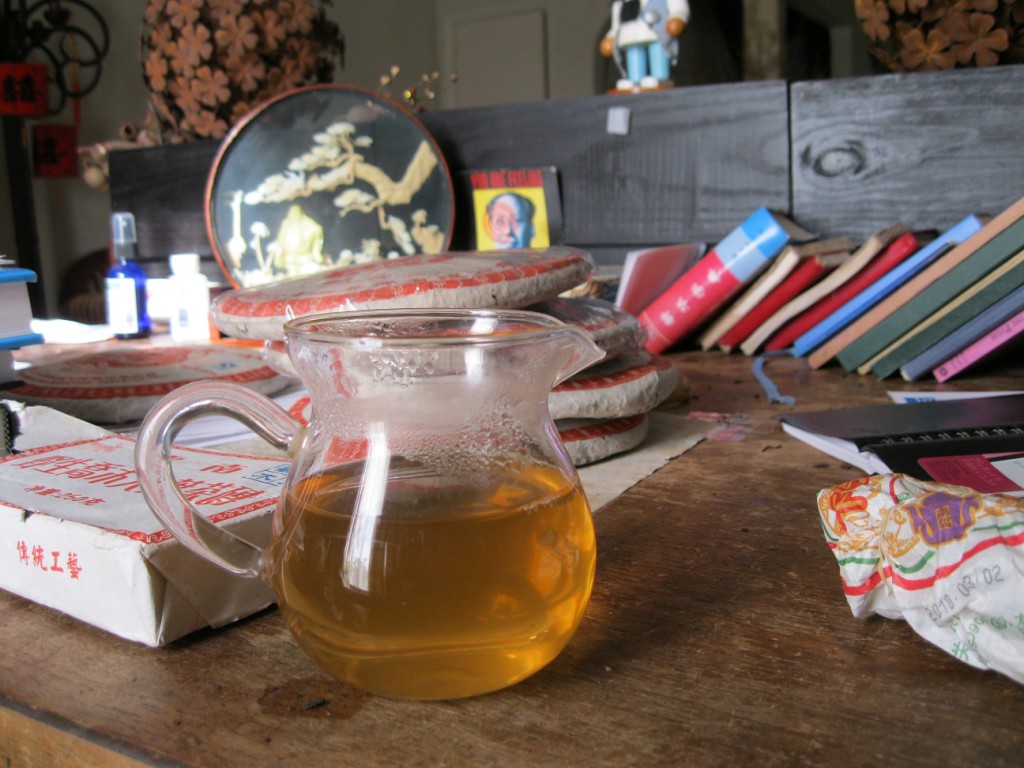Star of Week: 2008 Da Li Tuo, Xia Guan
This one wasn’t a very hard choice. Even though the weather is on the warm side, the ’08 Da Li Tuo is a spectacularly satisfying production. So thick, rich and sweet, it may be the best Xia Guan offering this Puerh Junky has drunk. Among the big three goliaths that formed the Chinese tea monopoly during the iron rice bowl years, each has its particular repute. Xia Guan is known for its tuo. This is certainly the tastiest Xia Guan tuo encountered in my sojourn. The balance of flavors is perfect. Its thickness and body is enough to even may Beyonce jealous. If you don’t like Beyonce, then don’t bother with the ’08 Da Li Tuo. Still with it’s impressive box and fascinating wrapper, the Da Li Tuo doesn’t just look good, in contrast to the aforementioned performer. Good looks would hardly merit winning Star of the Week. What will win it is body and boy does this ever fit that bill. This is a new arrival, so you might still catch it on sale.

